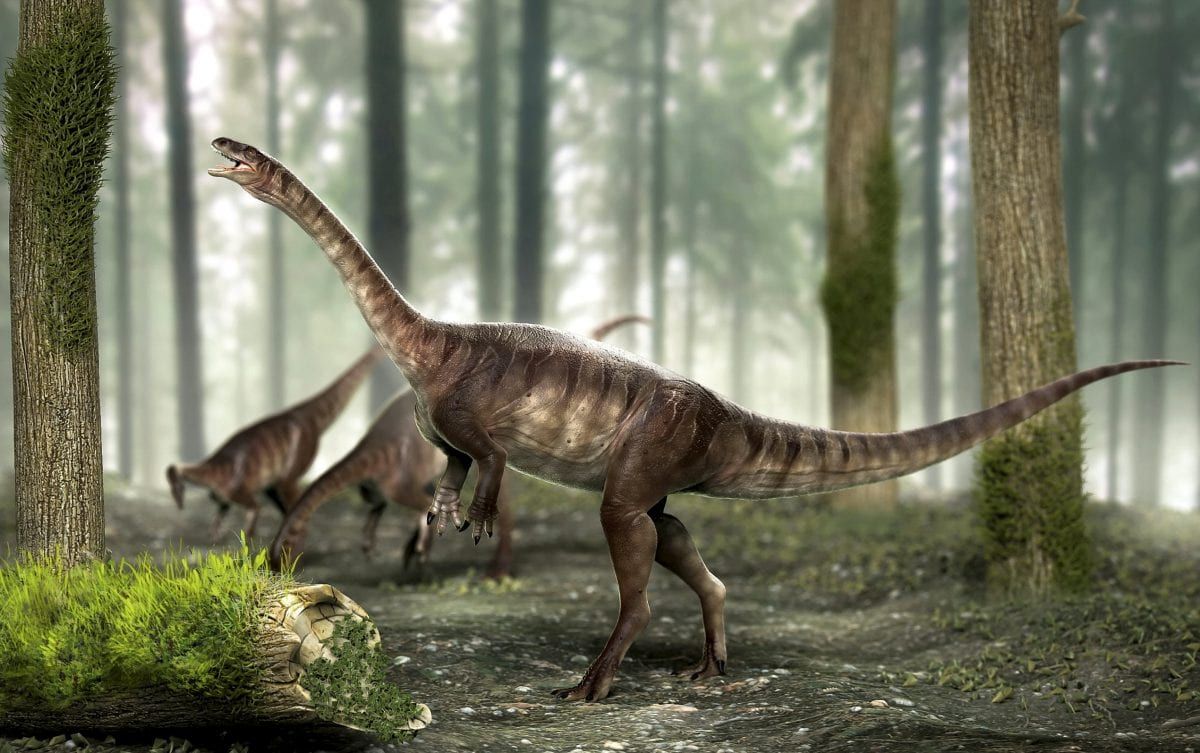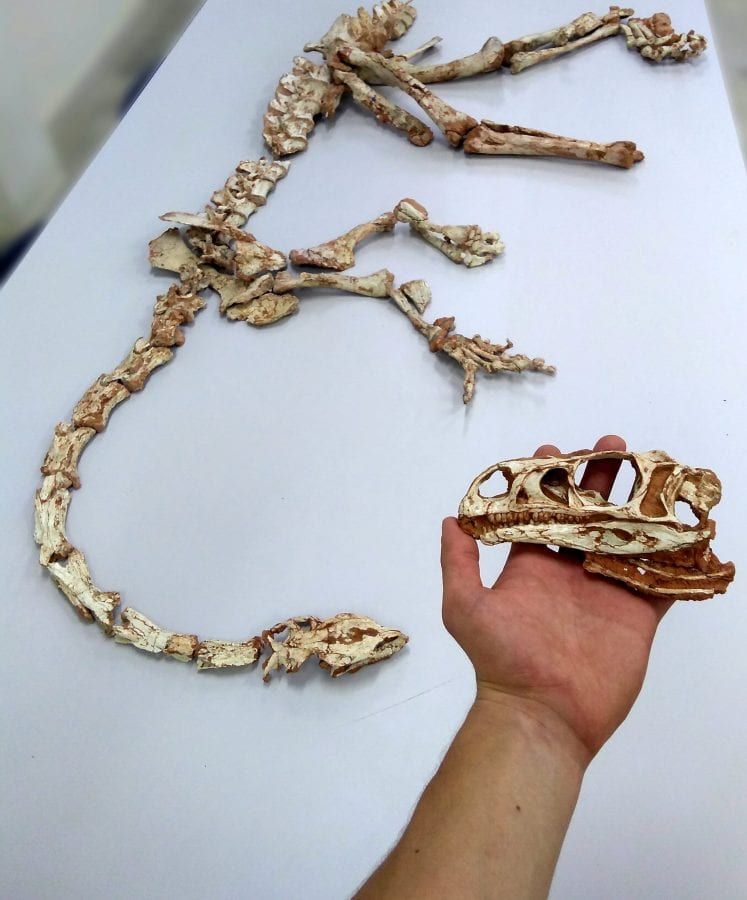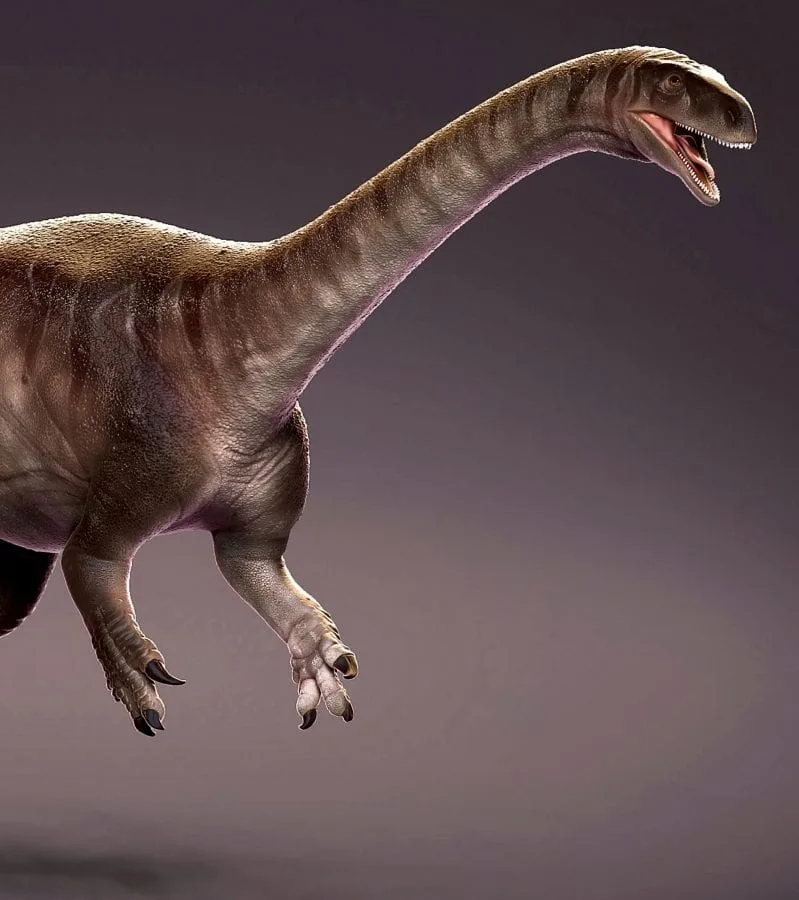One of the earliest of the long necked dinosaurs that lived more than 225 million years ago has been dug up in Brazil.
About the size of a car, the new species is a distant cousin of the sauropods, such as Brontosaurus, which grew into the largest terrestrial animals ever to walk the earth.
Named Macrocollum itaquii, it has been identified based on the astonishingly well preserved bones of three individuals that died together – in a single ‘graveyard’.
It roamed South America when it was still part of one huge supercontinent called Pangaea, before the land mass broke up into what we see today.
Like sauropods it too was a plant eater but unlike its famous descendants it was bipedal, walking on two legs instead of four.
Growing to about 12 feet long and five foot tall, it would have weighed about 16 stone.
Macrocollum, Latin for long neck, may help palaeontologists finally reveal how the sauropods got so big.
The largest and longest, the titanosaur Argentinosaurus huinculensis, weighed more than 100 tons and was 130 feet long.
The discovery is also remarkable for showing dinosaurs were already social creatures during this early stage of their evolution, living in groups.
Biologist Rodrigo Muller, of The Federal University of Santa Maria, Brazil, said: “The morphology of its teeth suggests this dinosaur was herbivorous.”

Its giraffe style neck would have helped it access a lot more food, reports the Royal Society journal Biology Letters.
The dinosaur lived when the dominant vegetation was ferns and gymnosperms – flowerless plants that produce cones and seeds.
It would have gorged on these, enabling it to nourish its already substantial body during a period known geologically as the early Norian.
Explained Mr Muller, a PhD student: “Indeed, the neck elongation present in the new dinosaur may also have provided a competitive advantage for gathering food resources.
“It would have allowed members of the group to reach higher vegetation compared to other early vertebrates.”
Macrocollum shared the landscape with other large vertebrates such as tusked mammal like reptiles called dicynodonts and pseudosuchians, that were similar to a crocodile.
Smaller mouse sized animals related to mammals known as cynodonts would have been scampering in the undergrowth.
Mr Muller said: “At this time, giant dinosaurs did not exist yet. Actually, the new dinosaur is the largest one from the strata where it was exhumed.”
The mode of preservation of the specimens that were unearthed is exceptional, he said.
Mr Muller went on: “There are three articulated skeletons in five tons of rock. This is unique.
“It suggests these animals probable died together, as they share the same degree of
disarticulation.
“So, if they died together, these dinosaurs probable lived together.
“Therefore, the association of skeletons corresponds to the oldest worldwide evidence of gregarious behaviour for the group of sauropodomorphs.

“This gives us an amazing picture of how these animals lived, which has never been done before.”
The trio were dug up at a fossil site in Rio Grande do Sul, southern Brazil, and fill a vital gap in palaeontology.
Mr Muller said the rise of sauropodomorphs is still poorly understood due to the scarcity of well preserved fossils.
He said: “Here, we present an association of complete and exceptionally well-preserved dinosaur skeletons that helps filling that gap.
“The new species allows defining a set of anatomical changes that shaped sauropodomorph evolution along a period from 233 to 225 million years ago.
“In that time span, apart from achieving a more herbivorous diet, sauropodomorph dinosaurs increased their size more than three times and their typical long neck was also established.”

This became proportionally twice as long as those of similar animals.
Added Mr Muller: “Indeed, the new dinosaur is the oldest-known sauropodomorph with such an elongated neck, suggesting that the ability to feed on high vegetation was a key trait achieved along the early Norian.
“Finally, the clustered preservation mode of the skeletons represents the oldest evidence of gregarious behaviour among sauropodomorphs.”

